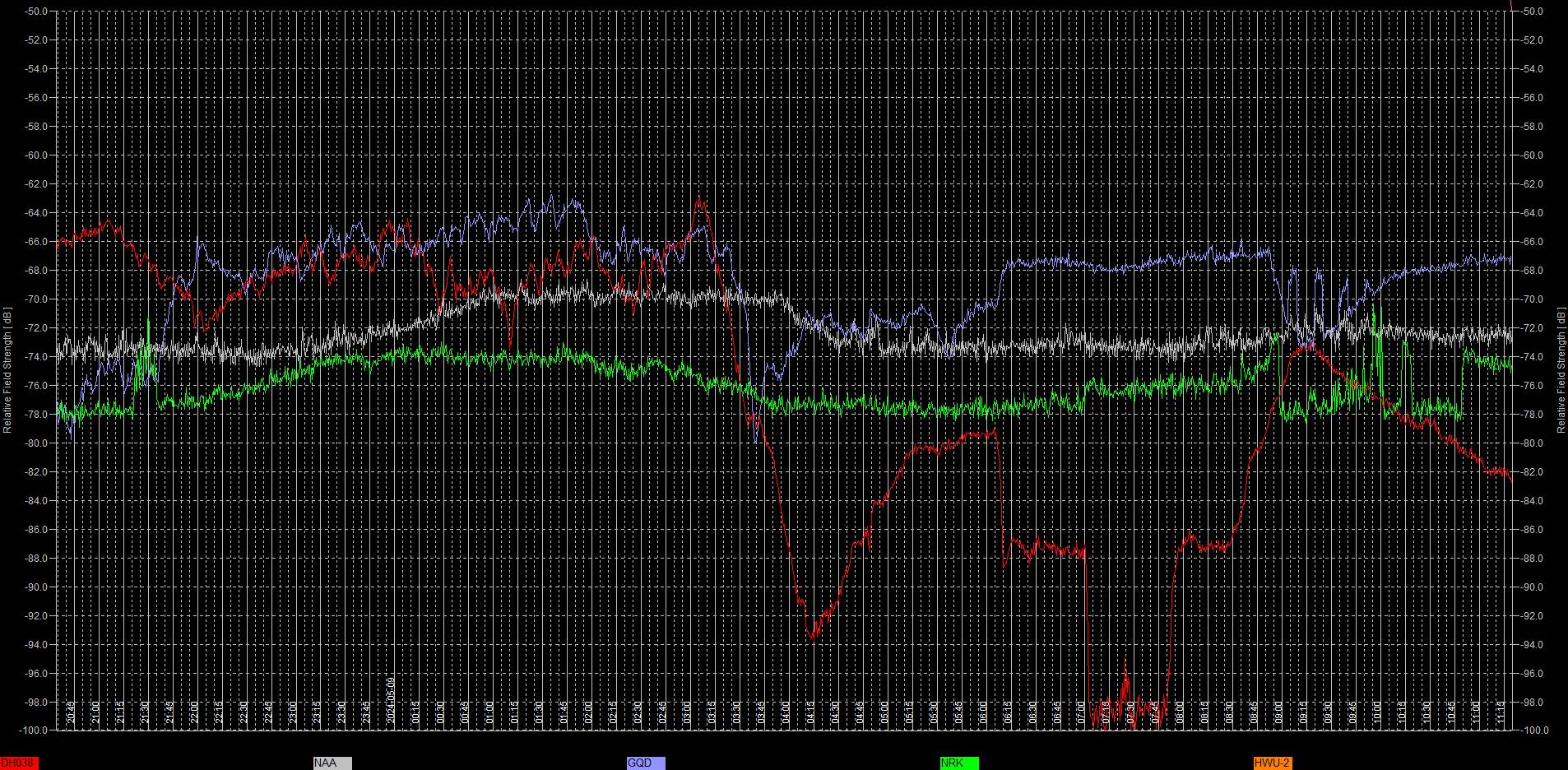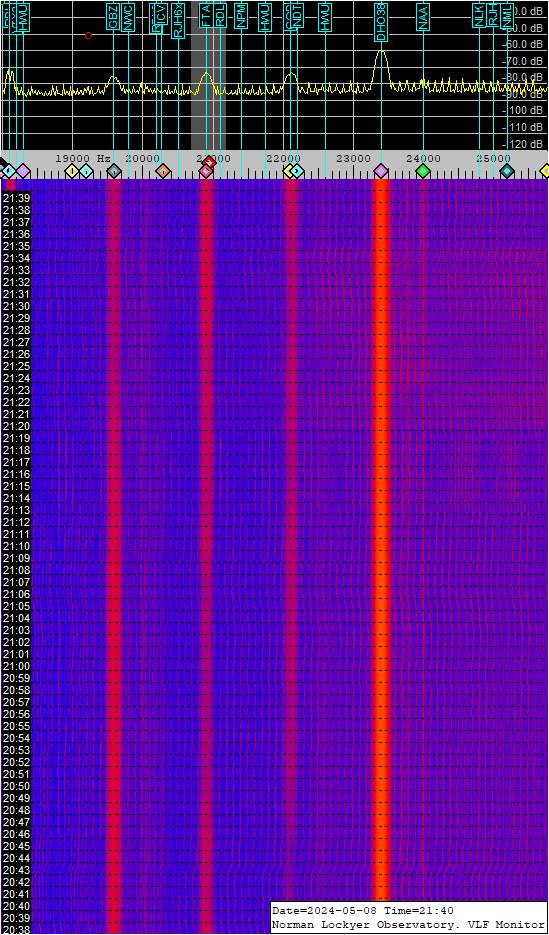
Solar Flare / Coronal Mass Ejection VLF detector.
From time to time there are explosions on the Sun, called Coronal Mass
Ejections (CME) which cause a mass of charged particles to be projected into
space.
If this emission is directed towards Earth we have the means to detect the radio signal when it arrives here 8 minutes later.
Two seperate pieces of equipment are used to detect these occurences. The detection of the flare itself is accomplished by having a recevier tuned to frequencies in the VLF band; in this case approximately 16kHz to 40kHz. The source of these signals is a number of very high powered transmitters that a number of countries are using - in our case the most useful one is DHO in Germany.
The detection of the arrival of the CME is by means of an array of three magnetometers that will detect the disturbances to the Earth's magnetic field caused by the impact of the CME on this field. These magnetometers are arranged so that we can look at the disturbance in three directions, E-W, N-S and the vertical component.
Since we know the time of the CME leaving the Sun and when it arrived here, and we know the distance between the Sun and Earth, we can calculate the velocity of the CME - Our record so far is 2.2 million mph, the average is in the region of 750,000 mph.

